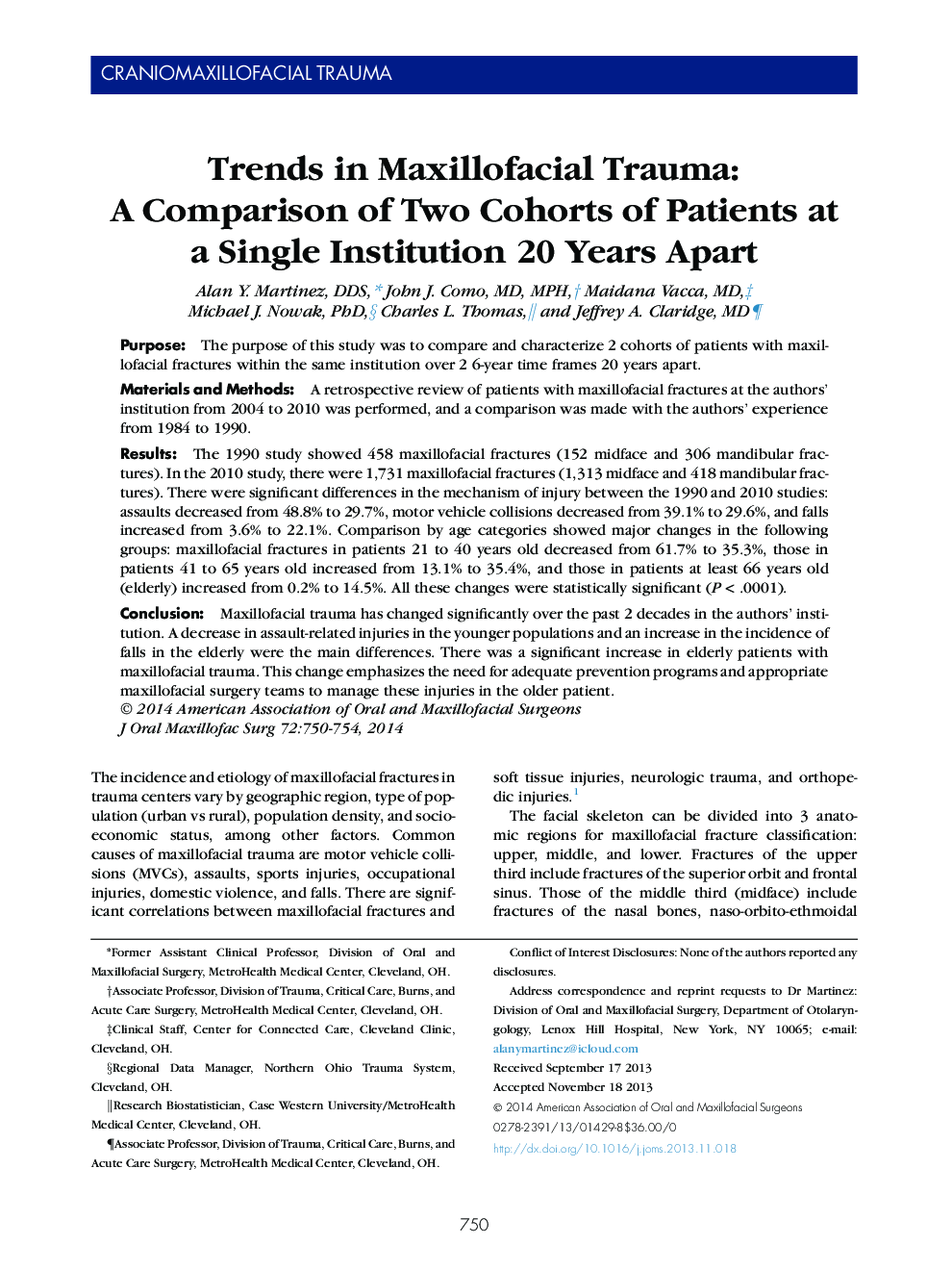| Article ID | Journal | Published Year | Pages | File Type |
|---|---|---|---|---|
| 3152911 | Journal of Oral and Maxillofacial Surgery | 2014 | 5 Pages |
PurposeThe purpose of this study was to compare and characterize 2 cohorts of patients with maxillofacial fractures within the same institution over 2 6-year time frames 20 years apart.Materials and MethodsA retrospective review of patients with maxillofacial fractures at the authors' institution from 2004 to 2010 was performed, and a comparison was made with the authors' experience from 1984 to 1990.ResultsThe 1990 study showed 458 maxillofacial fractures (152 midface and 306 mandibular fractures). In the 2010 study, there were 1,731 maxillofacial fractures (1,313 midface and 418 mandibular fractures). There were significant differences in the mechanism of injury between the 1990 and 2010 studies: assaults decreased from 48.8% to 29.7%, motor vehicle collisions decreased from 39.1% to 29.6%, and falls increased from 3.6% to 22.1%. Comparison by age categories showed major changes in the following groups: maxillofacial fractures in patients 21 to 40 years old decreased from 61.7% to 35.3%, those in patients 41 to 65 years old increased from 13.1% to 35.4%, and those in patients at least 66 years old (elderly) increased from 0.2% to 14.5%. All these changes were statistically significant (P < .0001).ConclusionMaxillofacial trauma has changed significantly over the past 2 decades in the authors' institution. A decrease in assault-related injuries in the younger populations and an increase in the incidence of falls in the elderly were the main differences. There was a significant increase in elderly patients with maxillofacial trauma. This change emphasizes the need for adequate prevention programs and appropriate maxillofacial surgery teams to manage these injuries in the older patient.
